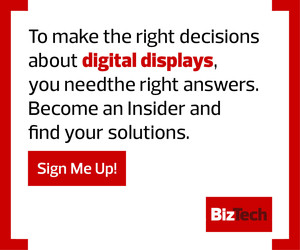How Does DvLED Differ From Traditional LED?
In recent years, a new digital signage technology has emerged: direct-view LED. DvLED goes a step beyond LED to deliver a very high-definition picture with unmatched vibrancy. The amazing clarity of the images these displays deliver can help hold the attention of viewers. Businesses that deploy dvLED displays can tap into cloud-based content management systems. Through cloud-based applications, businesses can store, display and schedule messages for specific hours, days, weeks and even holidays as needed.
Among its numerous benefits, dvLED delivers clearer pictures, less pixelated images, higher fields of visibility from a distance and a more efficient setup. DvLED displays can be deployed inside or outside, which enables versatility for business or entertainment use. DvLED displays eliminate the LCD panel, instead using a surface array of LEDs as the actual display pixels. This allows for incredible contrast, vibrant colors and brightness levels several times that of LCDs.
How Are Businesses Using DvLED Displays?
When dvLED was first introduced, many businesses felt they couldn’t afford the displays’ high price point. However, in recent years, prices for dvLED have dropped significantly, prompting more small and midsized business to consider adding these displays to their business strategies. Among the businesses exploring the use of dvLED are retailers, restaurants, airports, entertainment venues, financial institutions, schools and sports arenas.
DIVE DEEPER: Discover how dvLED displays can help businesses capture consumer interest.
DvLED displays can be used in numerous ways. For example, many fast food and casual dining restaurants use dvLEDs to display menus, which can easily be switched from breakfast to lunch offerings depending on the time of day. Similarly, airports use dvLED to provide travelers with departure and arrival times, as well as other vital information such as delays or boarding gate changes.
Retailers deploy dvLEDs to enhance customers’ shopping experiences, creating additional advertising space for highlighting particular items, collections or brands. On a larger scale, some dvLED displays serve as backdrops or media for visual effects at concert venues, theaters, churches, sports arenas and music festivals.
CDW offers the end-user customer dvLED solutions from quality digital signage partners. A CDW specialist will walk through a business’s specific goals, budget and display needs, then provide strategic recommendations on which display technologies may best meet those goals. After this assessment, CDW connects the business with BlueStar solution architects to help with quotes and services.
Businesses considering dvLED can use it to replace older displays or to meet newer technological needs. DvLED provides a powerful way to tell a visual story and create maximum impact.
This article is part of BizTech's AgilITy blog series. Please join the discussion on Twitter by using the #SmallBizIT hashtag.












